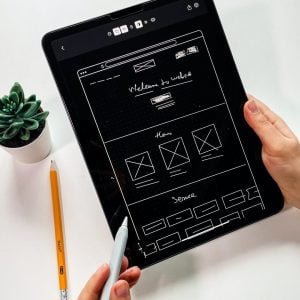Understanding Design Patents

Navigation
Introduction
A design patent is a protective right to the inventor of visual, aesthetic characteristics of an article of manufacture. The aesthetic characteristics are referred to in patent law as “ornamental” and are completely separate from the functionality of the item. Since the ornamental design of an item is separate from its function, it is theoretically possible to obtain a new design patent for a design on a well-known item. However, since the design is inseparable from the article of manufacture, it is practically unlikely to invent a new design for a known item without running into prior art issues.
A design patent can be granted to items that are ornamental and applied to other articles of manufacture. This could be a sticker, graphic heat press clothing design, or automobile hood ornament. The design patent would not include any rights to the underlying manufacture and must disclose this in the written specification and the drawing (by drawing the unclaimed manufacture with broken lines).
Application Process Differences from utility applications
A design patent protects the way something looks. A utility patent protects the way something functions. Apart from this patent law definition, there are several practical differences in obtaining a design patent as opposed to a utility patent.
Provisional patent applications are not available for design patents. This means that if you have a new invention that you want to cover with both a utility and design application, you can file a provisional application and disclose the design in the drawings but not claim the design in the application. This drawing disclosure will not provide you a prior art date based on filing, but will provide you a publication date which acts as proof to protect your rights if someone files a patent on your design. You wouldn’t reference the drawings in a design application but you would provide the drawings and provisional application in an interference proceeding.
II. Term Length
A design patent lasts for 14 years from the date the patent is issued. A utility patent, by contrast, lasts for 20 years from the date of filing. Utility patents also have complicated rules for recapturing term length based on slow processing by the USPTO.
Another important date difference is the date of priority. An inventor has 1 year from a prior self-publication to file a nonprovisional utility patent on their invention. However, a design application must be filed within 6 months of a prior self-publication.
III. Claims
A design patent may only include a single claim. This claim is often written as “the ornamental design of . . .”. A Utility application may contain up to 30 claims without paying additional fees. Design patents cannot include additional claims even for additional fees.
IV. Written Specification
Utility applications rely heavily on the written description of the invention. A design application has little, if any, written description. The design application depends on the drawings and optional descriptions of the figures within the drawing.
V. Prior Art
The prior art for designs is limited to designs in analogous art. A pair of patent law cases (Curver Luxembourg v. Home Expressions; and In re SurgSil LLP) form the legal foundation that claim language and subject matter classification limit the applicability of a design. If a design is limited to a specific device, or if the design is not in the same USPTO classification, then the design will not be analogous art.
International design applications are governed by the Hague Agreement. International utility applications are governed by the Patent Cooperation Treaty (PCT). Both governing laws are treaties between the US and multiple countries wherein the countries agree to use a centralized system to file one international application and then take the examined application and expedite national applications within the participating countries. However, the Hauge Agreement and the PCT have different procedures and different participating countries.
Obtaining a Design and Utility patent on a new invention
If you created a new invention you may be interested in obtaining both a design and utility patent. Utility patents cover the product itself and the process for making the product. If the product and process are inseparable, you may be able to cover both in one utility patent application. This offers you the benefits of saved application time and money as well as applying your prior publication date to both aspects of the patent. However, a design patent application cannot be combined with a utility application. Even though the design is inseparable from the item, a separate design application must be filed. You should consider filing a design patent early, as your utility application may be considered prior art against a design patent, requiring you to file your application within 6 months of the utility application.
When is a design patent worth it?
To determine whether a design patent is worth it, you need to evaluate the advantages and disadvantages.
A. Advantages
- Design applications cost less, especially in attorney’s fees;
- Design applications are examined and concluded substantially faster (roughly half the prosecution time);
- Design applications are granted at a much higher rate.
B. Disadvantages
- Design patents are narrow in scope, only covering the design of a product within a particular industry;
- Design patents are difficult to enforce, with the vast majority of enforcement attempts failing.
As you can see, the analysis can be summarized as: design patents are cheap and easy to get but aren’t worth much by themselves. I would, however, consider design patents well worth it if you consider the look of your product or invention important, or if you are trying to build a brand. A specific design, brand, or uniform look is often associated with quality and trustworthy items when used on a large scale. Production on a larger scale is also when cheap rip-offs are bound to pop up. Therefore, the low cost of a design patent is well worth it if you intent to grow your brand or sell your product on a somewhat large scale.
Conclusion
Design patents are separate from utility patents and vary in many important ways. They have different filing requirements, rules for prior art, international application procedures, costs, and processing times. They also have different enforceability and issue statistics, wherein design patents are easier and cheaper to obtain but more difficult to enforce. You should consult a patent attorney to determine if a design patent is a good option for you.

About
Attorney Collier started his own law firm straight out of law school and has been practicing law in Ohio for 5+ years. During that time, Joe focused on business law and litigation, gaining some exposure to intellectual property law. While running his firm in 2021, Joe decided to go back to school and get his patent license. Since then, Attorney Collier has been focusing on protecting innovators and entrepreneurs through his expertise in intellectual property and business law.
